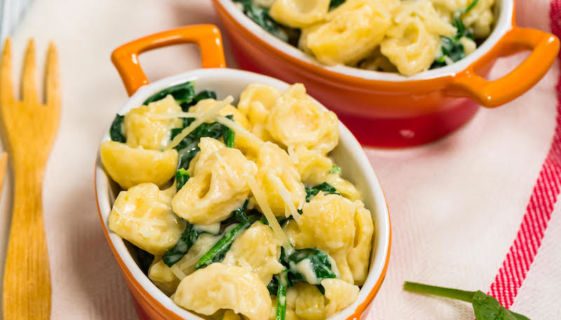This healthy and delicious pan-seared salmon is prepared in one skillet. Simmered in a fragrant, rich and creamy curry sauce, this dish is packed full of aromatics to enliven your senses. It is also full of protein and omega-3 fatty acids to help feed our brain and gut, reduce inflammation, and support our joints. The omega-3s also provide a special benefit through colder, dryer months; by retaining our skin’s natural moisturizing oils to support hydration and maintain elasticity.
Flavorful antioxidants are plentiful in the combination of onion, garlic, carrots, peppers, ginger, lime and spices. These ingredients blend beautifully with the rich coconut milk. The addition of fresh herbs provides a punch of immune-boosting, cancer-fighting, and stress relieving compounds. This healthy, easy, crispy, tender, creamy and seriously delicious curry salmon is sure to make a regular appearance on your weeknight dinner rotations. Note: If you do not eat fish you can make the sauce and add in chickpeas in place of the fish.
Serves: 4
Ingredients
- 4 6 oz. filets of fresh salmon
- 1 tbsp medium heat oil (avocado, ghee, sunflower, coconut, refined olive oil)
- Salt and pepper
- ½ onion, diced
- ½ cup carrot, diced
- ½ cup bell pepper, diced (any color)
- 3 cloves garlic, minced
- 1-2 inches of ginger root, grated or 1 tsp ground ginger
- 2 Tbsp curry powder
- 1 tsp paprika
- 1 tsp coriander
- 2 Tbsp tomato paste (optional)
- 1 lime, zested and juiced
- 1 Tbsp fish sauce (optional)
- 6 ounces coconut milk
- 6 ounces nondairy milk (almond and oat work well)
- 2 Tbsp fresh basil
- 2 Tbsp fresh cilantro
Directions
- Pat both sides of the salmon with a paper towel and season with salt and pepper.
- Add oil to a skillet over medium heat. Let the pan heat up for a few minutes.
- Cook the salmon, skin side down for 5 minutes then flip and cook for another 2-3 minutes.
- Remove the salmon from the pan and transfer to a plate.
- Remove about ½ of the oil from the pan and add the onion, carrots and bell pepper. Sauté for about 3-5 minutes until lightly browned.
- Add the garlic, ginger, curry powder, paprika and coriander and stir together. Allow to cook for 1 minute until fragrant.
- Add the tomato paste and cook for 1 more minute. Stir in the lime juice and zest.
- Add the fish sauce, coconut milk and nondairy milk. Stir to combine and allow to come to a boil, gently bubbling for 5 minutes.
- Add the fish back in and reduce heat to low and allow it to cook for 2-3 minutes. Taste and adjust seasoning with salt and pepper.
- Sprinkle it with basil and cilantro and serve immediately.
*This curry salmon dish is great with some sautéed broccoli, mushrooms or greens and a side of rice or quinoa
Nutritional Highlights
Salmon: When purchasing salmon from a fish counter or fish market, ask to smell before purchasing. The salmon shouldn’t have a fishy smell. Fish should always smell clean and fresh. Generally you want to cook it the same day or day after purchase. Salmon is packed full of essential omega-3 fatty acids to support brain and joint health, lower inflammation and reduce the risk of cardiovascular disease.
Garlic and Onions: Considered a prebiotic, meaning it feeds the “good” bacteria in our gut and promotes a healthy digestive system. Research supports that the compounds such as allicin in garlic and onions have antioxidant, anti-inflammatory, antimicrobial, and cardioprotective properties.
Ginger: Ginger’s bioactive compound 6-gingerol has been shown to have the ability to modulate cellular pathways active in cancer prevention as well as a potential therapeutic application for treatment. It also improves lipid metabolism, which decreases the risk of cardiovascular disease and diabetes.
Curry Powder: This is a very broad term and can refer to any number of unique spice combinations. The three main curry powders I gravitate towards are garam masala, madras and tandoori masala. Though each blend is different, there are many overlapping ingredients in most curry powder blends. Cumin, coriander, cloves, nutmeg, cinnamon, chili, turmeric, cardamom, fennel, fenugreek, and paprika are all common spices in curry powder. This combination of spices has been linked to lower inflammation, boost immunity and metabolism as well as support gut health. It can even make you feel good from the capsaicin in the chilies that promotes the secretion of endorphins.
Citrus juice and zest: Packed full of a multitude of nutrients such as vitamin C, flavonoids, and fiber which aid in vascular protection, reduce inflammation, improve gastrointestinal function and health, and play an important role in preventing diabetes, cancer, neurological disease. The vitamin C in the lemon juice will aid in the intestinal absorption of the iron in the spinach and peas.
Coconut Oil and Milk: The fat from coconut can allow our body to better absorb these essential fat-soluble vitamins (A, D, E, and K). It can increase good cholesterol levels (HDL). The fat in coconut is 90% MCTs which has shown to have a positive effect on metabolism and inflammation. MCTs have also shown to increase satiety leading us to feel more satisfied after consumption. Great non-dairy alternative for soups and sauces.
Coriander: The seed of cilantro. Fragrant and flavorful. Anti-microbial and anti-inflammatory properties.
Basil: Contains a range of protective vitamins such as Vitamins A, C, and K, as well as essential oils with high antioxidant properties due to the phytochemicals that help reduce oxidative stress in the body. These phytochemical are known to reduce the risk of cancer, but also prevent age-related macular degeneration, and support liver and cardiovascular health. A unique component of basil is its ability to enhance and preserve the healthful properties of other ingredients it is combined with.



 Ananda Kaplan
Ananda Kaplan


